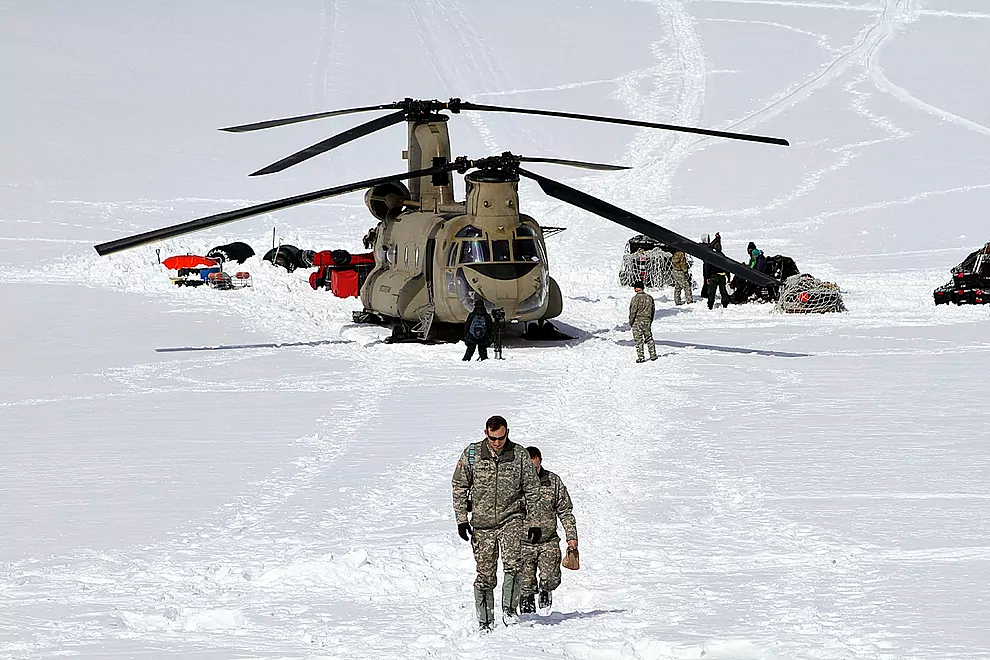
Moscow, April 16.- The rapid melting of ice in the Arctic – which is warming four times faster than the rest of the world – has facilitated access to a larger part of this strategic area, causing greater competition between the great powers that aspire to benefit from natural resources, and has created the “potential for conflict between Washington, Moscow and Beijing,” notes a recent article by The Washington Post, whose reporters had the opportunity to witness the maneuvers of the special forces of United States. United at a training camp on the outskirts of Fairbanks (Alaska).
In this context, the Pentagon – “fearful of a conflict with Russia or China”, whose “powerful armies compete with the US for dominance in the Arctic” – is training its special operations forces to “confront a threat direct to US territory” or that of its NATO allies in “one of the most treacherous scenarios on the planet.”
“ An absolute nightmare”
The adverse weather conditions turn any potential conflict in the Arctic into “an absolute nightmare” for those sent to fight, according to the media. That's why U.S. special operations forces are currently "in the midst of a major transformation."
Thus, a commander with the Colorado-based 10th Special Forces Group—which is supposed to be a U.S. Army clearinghouse for cold-weather clandestine operations—told the outlet that, For the past two decades, most of his division's activities were carried out within the framework of the missions of the US Central Command (CENTCOM), which oversees operations in the East Half. “We are also focused on Europe. But we have ignored much of the Arctic,” he revealed.
Meanwhile, "Russia has turned the lights back on at Soviet-era military facilities across the [Arctic] region, renovating a constellation of bases that outnumber NATO's collective presence there," the paper notes. On the other hand, China has a larger fleet than the US, which continues to grow, and is surpassing it in technology such as hypersonic missiles, a fact recognized by the Pentagon.
“The great Chinese advantage is in numbers,” the senior advisor at the Center for Strategic and International Studies, Mark Cancian, specified to the media, adding that “the sheer size” of the Chinese Army “raises enormous concern.”
The Arctic “can kill”
Faced with this situation, the Pentagon is trying not to be left behind and has intensified its activity in the Arctic, carrying out joint exercises with NATO and training its own special forces.
During one of these “stress tests,” which took place this winter at a training camp outside Fairbanks, Alaska, a team of Green Berets and a U.S. Navy Ground, Sea, and Air Force team. (SEALs) put their capabilities to the test in temperatures of 20 degrees Celsius below zero: they parachuted into the icy waters of Marmot Bay, sailed in an inflatable boat and rode snowmobiles.
In addition, the Marines fired 16 projectiles without an explosive charge, since "the standard missiles they wanted to use were not available due to their demand in Ukraine," the media specified with reference to a Marine.
Describing the course of these maneuvers, Captain Bill Gallagher, commander of the SEAL unit that participated in the exercises, indicated that in the Arctic even the most routine functions can become an existential threat, since it is one of the most dangerous places. rugged and extreme for any Army to operate. In the Arctic, “the environment can kill you faster than any enemy,” he observed.
Another commander, who spoke on condition of anonymity, indicated that “everything is more difficult when you are in the mountains” covered in glaciers, “because the mountains always try to kill you.” (RT News) (Photo: AP/Archivo)